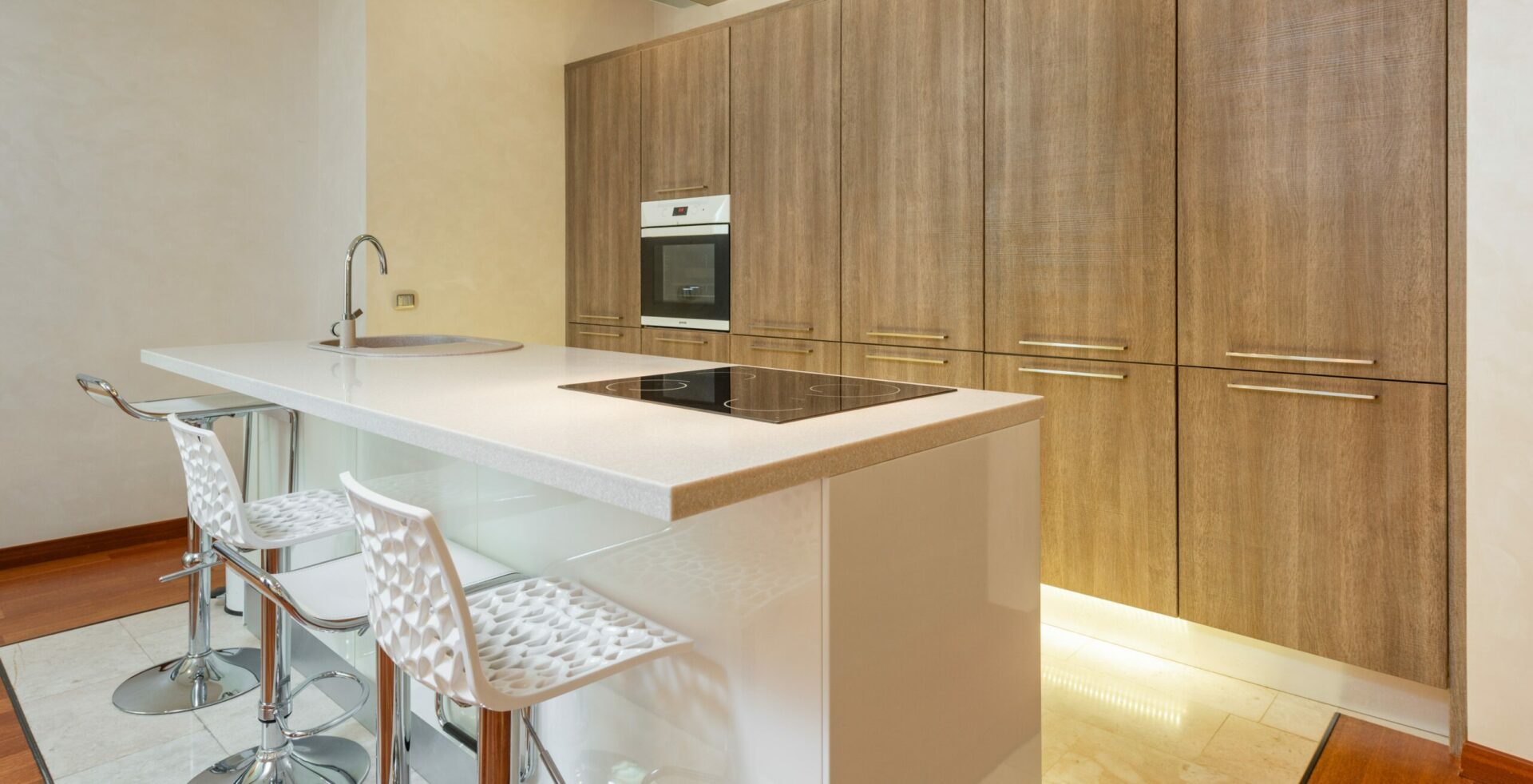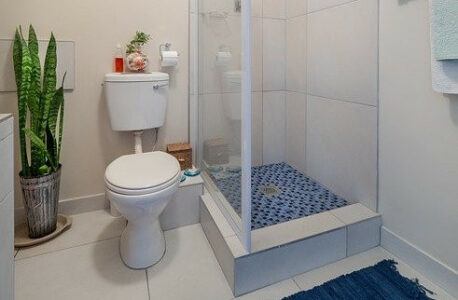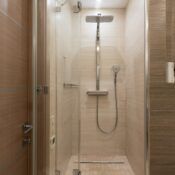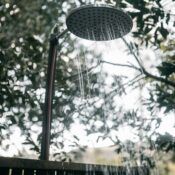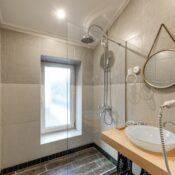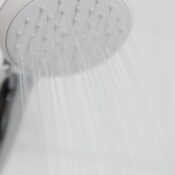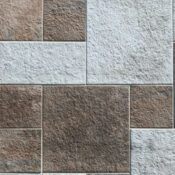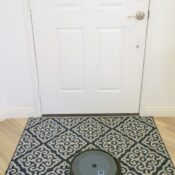How often do you scrub and clean your shower floors? Or are you among those who don’t even know how to clean a shower floor? The truth is that; shower floors require more attention than most people give.
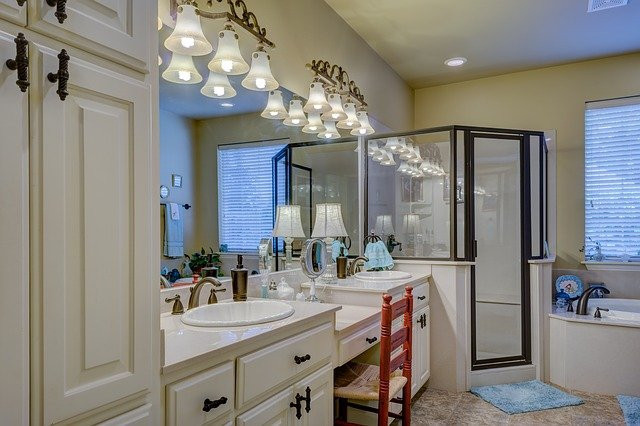 The floors in the shower room are constantly exposed to water, body oils, shampoos and soaps. When these products are not cleaned regularly, they build up on the floor and encourage the development of mold, mildew and bacteria. In turn, buildup of mold and bacteria poses health risks and brings about a foul smell in the bathroom.
The floors in the shower room are constantly exposed to water, body oils, shampoos and soaps. When these products are not cleaned regularly, they build up on the floor and encourage the development of mold, mildew and bacteria. In turn, buildup of mold and bacteria poses health risks and brings about a foul smell in the bathroom.
We Are Here to Help You!
Therefore, for you to keep your bathroom safe and relaxing, you need to regularly clean the shower floors. And the good news is, you don’t have to buy those expensive commercial cleaners or use too much elbow grease. With simple homemade products and less effort on your part, you can still get your shower floors sparkling clean.
Sounds good to be true, right? Well, we have researched about different natural methods of cleaning a shower floor and in this article, we discuss the safest and most effective of these methods.
Method 1: Basic Cleaning
Basic cleaning of shower floors is recommended to remove surface stains and grime.
Materials Needed:
- Two-Sided Sponge (or a clean, soft cloth)
- Non-Abrasive Cleaner (such as Dawn Dishwashing Soap or Lysol)
- Water
- Clean, Dry Cloth
The Process:
1. Using a two-sided sponge, apply a generous amount of the non-abrasive cleaner to your shower floors. Scrub the shower floors, paying more attention to the area around the center and the corners of the bathroom. Also, scrub the area around the drain more thoroughly, since this is where a lot of grime and soap scum tend to settle.
2. Using your shower head, rinse the shower floors with clean water to remove all the cleaning solution. Ensure that you reach all the corners of the shower room. Then, using a clean dry cloth, wipe the floors dry.
Method 2: Removing Tough Stains
When watermarks, grime and soap scum accumulate in a bathroom, they make the shower look dirty and unwelcoming. To remove tough stains and grime from your shower floors, you can use either of the three methods recommended below:
A. Vinegar
White vinegar contains acid that cuts through grime, removing all stubborn oils and grease from the shower floors.
Pour white vinegar on all the tough stains and grime. Let the solution sit for at least ten minutes. Using a soft brush (or a sponge), scrub off the stains. Then, rinse off the floors with clean water. If there are still additional stains on the floors, repeat the process until you are satisfied with the result.
B. Hydrogen Peroxide
Hydrogen peroxide is especially recommended for removing dark spots and marks on white shower floors. Being a mild bleach, it perfectly restores the shine of white shower floors. However, hydrogen peroxide is not a one-minute fix; hence, you might be forced not to use the shower until the following day after cleaning with it.
Soak a clean, white cloth in a generous amount of hydrogen peroxide. Place the cloth over the dark marks and stains and let it stay overnight. In the morning, lift the cloth and rinse off the shower floors with clean water. Using a dry towel, wipe off the floors and allow them time to dry completely.
C. Baking Soda
Baking soda is ideal for cleaning shower floors that only have stains and not any hard watermarks. The paste cleans soap scums and other stains very effectively.
In a clean bucket, mix equal amounts of clean water and baking soda. Cover all the stains with the baking soda paste, then let it sit for 1-2 hours. Using a soft brush or sponge, scrub the stains. Rinse the shower floors with clean water and dry using a clean towel.
Method 3: Removing Mildew
Due to the high moisture content in the bathroom, most shower floors tend to accumulate mildew. And if not removed, it can even lead to development of stubborn grime, making the shower appear old and dirty. More so, high levels of mildew can pose serious health risks for you and your loved ones.
Materials Needed:
- Chlorine Bleach
- Non-Abrasive Brush
The Process:
1. Apply a small amount of chlorine bleach on the stains and dark marks. Let it soak for at least a few minutes.
2. Using a non-abrasive brush, scrub and remove all the stains on the floor. Rinse the floors thoroughly with clean water and wipe with a dry cloth.
Note
Since chlorine bleach has a very overpowering scent, it is recommended that you keep all the windows and doors open for better ventilation when cleaning the bathroom. Also, remember to wear protective gloves and clothing in case the bleach spills.
Method 4: Removing Mold
Mold is especially common in showers that leak. Usually, rust stains on the shower floors indicate the presence of mold in the bathroom.
Materials Needed:
- Fresh Lemon Juice (Alternatively, you can use white vinegar)
- Soft Sponge
- Water
- Baking Soda
- Clean, Dry Cloth
The Process:
1. Pour a generous amount of fresh lemon juice/ vinegar on the stains. Let it sit for 1-2 hours. Using a sponge, scrub the stained parts of the shower floors. Then, rinse thoroughly with clean, running water. Allow the water to run for a while to completely neutralize the lemon juice acid.
2. For stubborn and tougher mold stains, create a paste of baking soda and fresh lemon juice. Spread this paste generously on all the stains then let it sit for 3 hours. Using a soft sponge, scrub the stains vigorously to remove all the rust caused by the mold. Then, rinse the floors with clean running water and dry them using a clean cloth.
Imagine having a very bad, stressful day, only to come home to a dirty and grimy shower room. Indeed, having a clean shower is essential for a relaxing bathroom experience. And while you can still clean the bathtub and the toilet, it is also important that you regularly clean the shower floors.
The different ways on how to clean a shower floor discussed in this article can help you maintain the cleanliness of your bathroom, such that it provides the relaxing experience that is supposed to!
